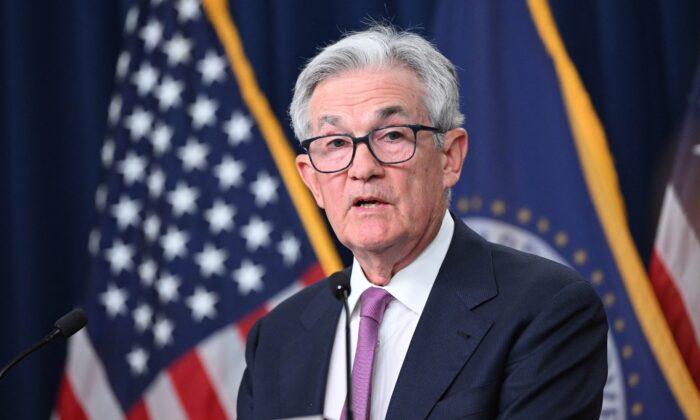Newly released records of discussions among Federal Reserve policymakers show that they expect one more interest rate hike and then they'll hold rates high for “some time,” although a recent surge in long-term Treasury yields may have changed that calculus.
At that meeting, FOMC members opted to keep rates unchanged within a range of 5.25 to 5.5 percent—the highest level in 22 years.
Bond Surge in Focus
Since late July, the yield on the benchmark 10-year Treasury note jumped from about 4 percent to about 4.8 percent—a 16-year high.Mortgage rates, which are closely tied to the 10-year Treasury yield, have risen to 7.5 percent, a 23-year high, according to Freddie Mac.
Corporate bond yields, too, have risen, raising borrowing costs for businesses.
Philip Jefferson, vice chair of the Fed’s board, said in a speech on Oct. 9 to the National Association for Business Economics that higher bond rates are something that he will keep in mind as he assesses “the future path of policy.”
At the same event, Lorie Logan, president of the Federal Reserve Bank of Dallas and a voting member of FOMC, said that market moves around long-term bond rates would tighten financial conditions and do some of the Fed’s work for it, weakening the case for the central bank to deliver another rate hike.
“If long-term interest rates remain elevated“ as investors demand higher returns for holding what they deem are riskier long-term bonds, ”there may be less need to raise the fed funds rate,” Ms. Logan said, referring to the central bank’s benchmark rate.
Atlanta Federal Reserve Bank President Raphael Bostic told the American Bankers Association on Oct. 10 that he doesn’t think any further interest rate increases are needed. He said monetary policy is sufficiently restrictive and much of the effect of the Fed’s series of rate hikes thus far has yet to be felt.
The minutes from the Fed’s latest meeting showed that all rate-setting committee members “agreed that policy should remain restrictive for some time,” qualifying that by saying that a mark of when to start lowering rates wouldn’t come until the FOMC is “confident that inflation is moving down sustainably toward its objective.”
“A few participants noted that the pace at which inflation was returning to the Committee’s 2 percent goal would influence their views of the sufficiently restrictive level of the policy rate and how long to keep policy restrictive,” the minutes read.
Inflation Reaccelerates

Markets are awaiting the next release of inflation data, scheduled for Oct. 12.
Mark Hamrick, senior economic analyst at Bankrate, told The Epoch Times in an emailed statement that he expects the Oct. 12 inflation data to show a “possible modest easing from August’s 3.7 percent increase, down from the four-decade high of 9.1 percent in June 2022, but well short of the Federal Reserve’s 2 percent target.”
Waning Consumer Confidence

Expectations about the economic outlook over the next six months dropped below the Conference Board’s recession threshold of 80, reflecting waning confidence about business conditions, job availability, and earnings.
“Write-in responses showed that consumers continued to be preoccupied with rising prices in general, and for groceries and gasoline in particular. Consumers also expressed concerns about the political situation and higher interest rates,” Dana Peterson, chief economist at the Conference Board, said in a statement.
“That sort of pileup wears on the consumer and makes them wary,” Mr. Simon told the outlet. “For the first time in a long time, there’s a reason for the consumer to pause.”
Consumer spending is a major driver of the U.S. economy, accounting for roughly two-thirds of gross domestic product.







